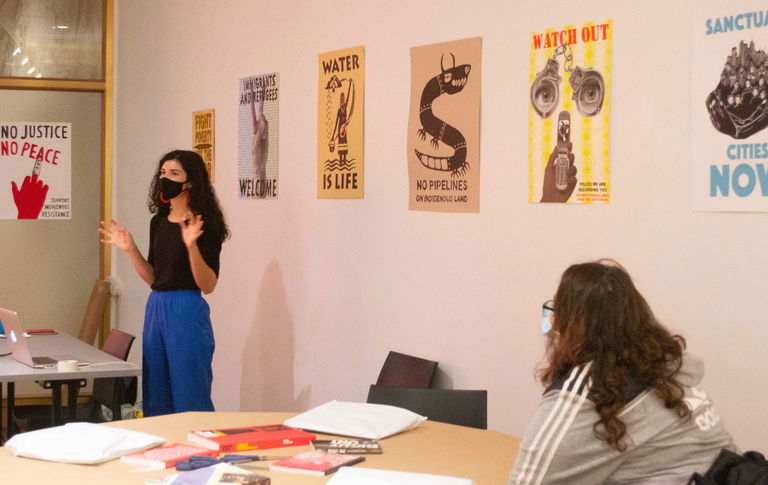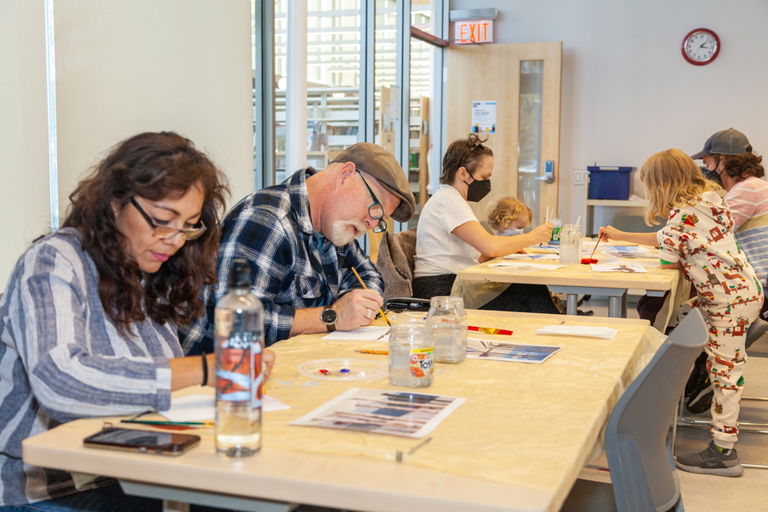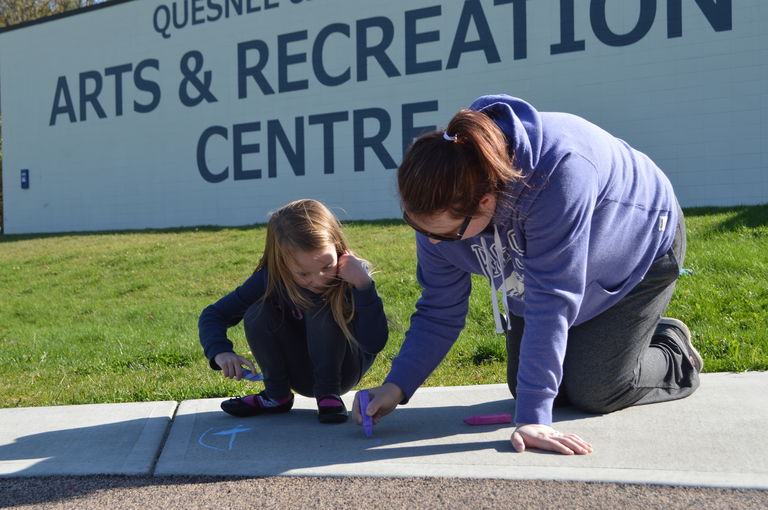
Meet our Organizers: Laura Rojas
Culture Days
Apr 19, 2022
As a 2021 Ontario Culture Days Creative in Residence, Laura Rojas led a series of poster-making workshops inviting community members to participate in this graphic tradition and learn how art and design can serve as tools for education and mobilization. Lean more about her experience as a Creative in Residence, the role of community in her practice, and what’s she’s up to lately. Here’s what she shared with us.
Tell us a little bit about who you are, how and why you create
Hi! My name is Laura Rojas and I’m a community artist and graphic designer. I love collaborating with folks on community-building and arts-based projects such as public workshops and participatory installations, making zines and publications, and also having a graphic design practice. I currently work as a designer at Underline Studio and am part of the MUSE Arts community of artists. I’m so grateful for the incredible people I get to collaborate with every day and I think that’s a big motivation for me— being surrounded by people with shared passions is very special.
One of the reasons why I love community arts so much is because they bring people together in a way that reminds us that the world is small, that we are interconnected and part of an ecosystem that heavily relies on one another. I think everyone has the capacity to be an artist and I love seeing the expression on people’s faces when they realize that.

Can you tell us more about how you use art and design as tools for education, participation and mobilization?
I think art has an intrinsic political quality in the way that it can take up space and express concepts that encourage participation from an audience. At a micro-level, art helps us communicate our deepest desires, our reactions and understandings of the world, our visions of the future. Similarly, I would say design also has a social responsibility— it’s a mode of visual communication! It can be used in favour of or against our rich social fabric that envisions a better world. Print media in particular, like posters and flyers, has the capacity to cross physical boundaries of access and reach a wide audience.
I really love using these practices as tools for the above: for understanding our world collectively, for expressing our place in it, and for encouraging the building of better futures. I think providing folks with these tools encourages them to amplify their voice, to denounce or to communicate a message, and to do so in a strong and successful way. I’m all for democratizing design knowledge and breaking down barriers of access for participation in that field.
Some projects that I’ve done that aim to use art/design for education and mobilization include Bananaland, a publication that shares information about the exploitative history and impact of the banana industry in Latin America, graphics I’ve created for a fundraiser in support of RAICES Texas, design work in collaboration with local mutual aid projects, and of course, the poster workshop I was able to do as pat of the Ontario Culture Days Festival last year along with other workshops I’ve supported with MUSE Arts.

From your perspective, how can the arts support community-building and our connections to social and political movements and participation?
I think there are so many ways! I love the history of radical graphics because we see how art is so deeply tied to social movements. People have always used art (and design) to amplify their voices, to spread a message in times of crisis. It’s a way to garner support for something, to denounce and make people aware and thus create a larger community around an issue, or even just to raise funds to financially support a project.
When we use the arts in collective spaces, we feel connected to each other. Once we feel connected to each other again, we are much more likely to identify forms of oppression and learn to denounce them, to imagine the world without them and work to make that real. Like I mentioned earlier, art and design have a lot of inherently political qualities. I would say even the fact that we are dedicating time and space to these methods in a society that has often belittled their value can be read as a political act.
How has the role of community (however you choose to define ‘community’) impacted your practice?
I think community, in its many definitions, has always been integral to the work I enjoy doing. I started being interested in design when I joined a zine collective and worked collaboratively with others interested in publishing student work at X University. Throughout my journey in art and design, I’ve always participated in groups– projects with other students, projects with friends, projects with grassroots collectives. Then, when I first became exposed to community arts through the amazing people at MUSE Arts, that totally changed my understanding of what I was passionate about. It suddenly had a name, a methodology, a pedagogy. With MUSE Arts, we’ve traveled to Colombia twice together for a community arts residency and exchange with local artists— those experiences have impacted me deeply, allowed me to feel more connected to the territory where I’m from and gave me the opportunity to create strong bonds with other people committed to using art in favour of social change. This has paved the way for lots of projects and collaborations, both locally and internationally.

In 2021 you participated as an Ontario Culture Days Artist in Residence, why did you decide to participate? Is there anything that surprised or delighted you about this experience?
When I applied to ON Culture Days with a workshop idea, I was excited at the thought of being able to carry through a public arts program and gain experience working with the team at ON Culture Days. It felt like the perfect launchpad to try out a workshop that I had been stewing in my mind for some time. I was both surprised and delighted at the invitation to be a Creative in Residence and take the project a little further! It was an amazing opportunity for growth and I’m so grateful for the experience.
As part of your Culture Days program, “Solidarity Through Design”, you led several poster-making workshops. Tell us more about this experience.
It was a great experience. Working closely with Meaghan Froh Metcalf and Nawal Salim, we developed an online and in-person workshop where participants were able to learn some graphic design fundamentals, see radical graphics from poster archives (both digital and physical for the in-person one), and create their own poster based on what they’d learnt and what they wanted to express. I brought along some books to reference and Jesse Purcell from Repetitive Press lent us some posters from his archive that people could see up close.
Participants were prompted to envision what a better world would look like and invited to respond in a poster. Posters have long been used as vehicles for spreading information, for denouncing something or for garnering support, and this workshop shared some of that history and invited participants to be part of this graphic tradition.
Those who wanted to participate but couldn’t attend the workshops could also send us their submission through an online form. We received some amazing responses back! Afterwards, I compiled them all, along with some photos of the in-person workshop that were taken by Isabella Marín Hernandez (a youth photographer who participated in one of our past workshops with MUSE Arts), and made a zine with everyone’s submissions.
Everybody who participated in the workshop received a kit with materials and, thanks to TO Live and the TPL North York branch, had the opportunity to make copies of their posters with the intention that they could put them up in public spaces.

What does the year ahead hold for you creatively?
I have lots of ideas for workshops that I’d like to do and many collaborators ready to get involved, so I hope to be able to put those together! I also have a couple of collaborations with friends in Colombia coming up and have been working on some fun design and writing projects that I’m looking forward to sharing. We’re getting ready to start in-person workshops again at MUSE Arts, with some youth photography workshops with Clic Clac Collective coming up in the next month. I’m really excited for those.
Where can people go to see what you’re up to?
My website seems to be perpetually under construction, but you can find me on Instagram: @laurrojas
And if you’d like to connect, feel free to DM me or send me an email. I’m always keen to collaborate, as you might have noticed! [email protected]




